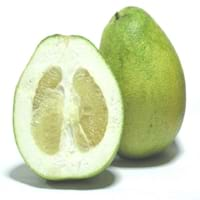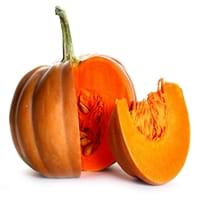Health Benefits
Cancer prevention, Heart care, Prevents Urinary Tract Infection
Arthritis treatment, Cancer prevention, High Cholesterol Regulation, Lower blood pressure, Helps Prevent cataract, Prevents gall stones, Ulcer treatment, Weight loss properties
General Benefits
Digestive aid, Fights against infections, Flu treatment, Healing of wounds, Helps in weight loss, Treatment of common cold
Boosts respiratory health, Eliminate parasites and infections, Protects against birth defects, Strengthens bones
Skin Benefits
Anti-aging benefits, Brightens and lightens complexion
Heals sunburn, Hydrates skin, Skin rejuvenation
Hair Benefits
Promotes longer and healthier hair, Protects hair
Regulates hair growth
Allergy Symptoms
Abdominal cramps, Abdominal pains, Diarrhea, Lightheadedness, Nasal congestion, Nausea, Swallowing difficulties, Swelling of mouth, tongue or lips, Vomiting
Abdominal cramps, Anaphylaxis, Digestive Problems, Dizziness, Eczema, Fainting, Hives, Inflammation, Itching, Tingling sensation in wrist and face, Vomiting, Wheezing
Side Effects
Allergic reaction, Dizziness, Stomach pain
Kidney and gallbladder diseases
Best Time to Eat
As a snack in the late afternoon, Don't consume at night and before bed, Eat the fresh ones, avoid mixing with any other foods, don't eat after meal., Morning time (before lunch)
Along with meal, Don't eat after meal, Morning time (before lunch)
Vitamin A (Retinol)
Not Available
Vitamin B5 (Pantothenic Acid)
Not Available
Vitamin B9 (Folic acid)
Not Available
Vitamin C (Ascorbic Acid)
Vitamin E (Tocopherole)
Not Available
Vitamin K (Phyllochinone)
Not Available
Lutein+Zeaxanthin
Not Available
Phytosterol
Not Available
Calories in Fresh Fruit with Peel
Calories in Fresh Fruit without Peel
Not Available
Calories in Frozen Form
Not Available
Not Available
Calories in Dried Form
Not Available
Calories in Canned Form
Not Available
Calories in Jam
Not Available
Type
Citrus, Tropical
Berry
Season
All seasons
All seasons
Varieties
Chandler, Cocktail, Cuban Shaddock, Hirado Buntan, Honey, Jaffa Red, Mato Buntan, Pomelit, Reinking, Siamese Sweet and Sweetie
Jarrahdale, Peanut, Lakota, Cow, Sugar, Caribean, Red kuri, Buttercup and Pink lady
Color
Green, Pink, Red, Yellow
Blue, Green, Orange, Red, White
Inside Color
Creamy Yellow
Creamy Yellow
Texture
Succulent
Fibrous
Taste
Juicy, Sweet
Creamy, Soft, Sweet
Origin
Malaysia, South-Eastern Asia, Thailand
Mexico
Soil Type
Clay, Loam, Sandy
Clay loam, Sandy loam, Well-drained
Climatic Conditions
Warm
Warm to hot climate
Facts about
- Flowers of pomelo fruit are used to make perfumes.
- Pomelo tree wood is used for the manufacture of tool handles.
- Life of pomelo tree is around 10 years.
- Height of pomelo can be 15-20 feet.
- The name pumpkin has its roots in the Greek word ‘pepon’, meaning ‘large melon’.
- The largest pumpkin ever grown weighed 1,140 pounds.
- Pumpkins were once known for removing freckles & curing snake bites.
Other Countries
Argentina, India, Israel, Mexico, South Africa, Sudan, Thailand, Turkey, United States of America
Egypt, India, Indonesia, Iran, Italy, Mexico, Russia, Spain, United States of America
Top Importer
Europe
United States of America
Top Exporter
United States of America
China
Botanical Name
Citrus maxima
Cucurbita maxima
Synonym
Citrus grandis
Cucurbita pepo, Squash
Subkingdom
Tracheobionta
Tracheobionta
Division
Magnoliophyta
Magnoliophyta
Class
Magnoliopsida
Magnoliopsida
Subclass
Rosidae
Dillenhidae
Order
Sapindales
Cucurbitales
Family
Rutaceae
Cucurbitaceae
Species
C. maxima
Cucurbita mixta
Generic Group
Citrus fruit
Not Available
Difference Between Pomelo and Pumpkin
We might think that Pomelo and Pumpkin are similar with respect to nutritional value and health benefits. But the nutrient content of both fruits is different. Pomelo and Pumpkin Facts such as their taste, shape, color, and size are also distinct. The difference between Pomelo and Pumpkin is explained here.
The amount of calories in 100 gm of fresh Pomelo and Pumpkin with peel is 38.00 kcal and 26.00 kcal and the amount of calories without peel is Not Available and 30.00 kcal respectively. Thus, Pomelo and Pumpkin belong to and category.These fruits might or might not differ with respect to their scientific classification. The order of Pomelo and Pumpkin is Sapindales and Cucurbitales respectively. Pomelo belongs to Rutaceae family and Pumpkin belongs to Cucurbitaceae family. Pomelo belongs to Citrus genus of C. maxima species and Pumpkin belongs to Cucurbita genus of Cucurbita mixta species. Beings plants, both fruits belong to Plantae Kingdom.









